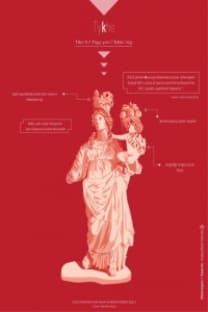Zamanda Değil Mekanda Olmak: Ses Sanatı Bağlamında Ses ve Mekan İlişkisi
Yirminci yüzyılın ikinci yarısıyla birlikte Batı klasik müzik geleneğinden gelen avangart müzisyenler kompozisyon anlamında müzik dünyasına yeni tanımlamalar getirmişlerdir. Bu tanımlamaların bir sonucu olarak müzik geleneğinden özgürleşen ses konsepti görsel/plastik sanatlar alanında da bir ifade biçimine dönüşmüştür. Bu çalışma 1960’lı yıllarda Batı sanat ortamında ortaya çıkan ve günümüzde ses sanatı olarak kabul edilen üretim alanını tanımlayarak müzikteki ses ile ses sanatındaki ses kavramı arasında bir ayırım yapmayı amaçlamaktadır. Çalışmada yer alan ve ses sanatı kapsamında değerlendirilen farklı sanatçılara ait yapıtlar John Cage, Pierre Schaeffer ve Ergard Varése’nin eserleri ile karşılaştırılarak mekan konusuna odaklanılacaktır
Anahtar Kelimeler:
Ses Sanatı, Ses ve Mekan, Ses Enstalasyonu, İşitsel Manzara
BEING NOT IN TIME, BUT SPACE: THE RELATIONSHIP BETWEEN SOUND ART AND SPACE WITHIN THE CONTEXT OF SOUND
By the second half of the twentieth century, avant-garde musicians who were of Western classical music tradition brought new definitions to the domain of composition. The concept of sound which was liberalized from the tradition of music as a result of these new definitions, has transformed itself into a new way of expression in visual/plastic arts. The aim of this study is to define the production field of sound art emerged in the Western art world of the 1960s and to differentiate the concepts of sound and sound art. The artworks that are evaluated in this study will be compared to the ones of John Cage, Pierre Schaffer and Edgard Varése with a specific emphasis on space
Keywords:
Sound art, Sound and Space, Sound Installation, Soundscape,
___
- Cage, J. A Year from Monday; New Lectures and Writings. Middletown, Wesleyan UP, 1967
- Kelly, Caleb. Sound. London: Whitechapel Gallery, 2011
- LaBelle, Brandon. Background Noise: Perspectives on Sound Art. New York: Continuum International, 2006
- Leitner, Bernhard. P.U.L.S.E.: Räume Der Zeit = Spaces in Time. Ostfildern: Cantz, 2008
- Licht, Alan. Sound Art: Origins, Development and Ambiguities. Organised Sound. 14.01 2009: 3. Baskı
- Little, William, Murray, James A. H. and C. T. Onions. Music. Tan. 1. The Oxford Universal Dictionary. Oxford: Clarendon, 1955, 1300. Baskı
- O’ Doherty, Brian. Beyaz Küpün İçinde: Galeri Mekanın İdeolojisi Çev. AhuAntmen. İstanbul: Sel Yayıncılık. 2010
- Ouzounian, Gascia. “Sound Art and Spatial Practices Situating SoundInstallation Art since 1958”. 2008
- Ross, A. The Rest Is Noise: Listening to the Twentieth Century. New York: Farrar,Straus and Giroux, 2007
- Say, A. Müzik Nedir, Nasıl Bir Sanattır? İstanbul: Evrensel BasımYayım, 2008
- Varèse, E. The Liberation of Sound. Audio Culture: Readings in ModernMusic, ed.Christopher Cox and Daniel Warner. London: Continuum,2004 Baskı
- Wallin, Nils L., Björn, M. ve Steven B. The Origins of Music. Cambridge: MIT, 2000
- White, John D. The Analysis of Music. Englewood Cliffs: Prentice Hall, Wolsey, M. Perceiving Voices in Contemporary Art an Auditory Exploration of Image, Sculpture and Architecture. Concordia University, 2009 İNTERNET KAYNAKLARI
- Duckworth, W. A Conversation with Max Neuhaus and UlrichLoock. Max neuhaus.info. Erişim Tarihi: 29 Eylül 2015
- Fontana, B. Harmonic Bridge: Artist's Statement. tate.org.uk. Erişim Tarihi: 11 Ekim 2015
- Kahn, Douglas. Sound Art, Art, Music, Special Issue On Sound Art, ed. Ben Basan. The Iowa Review Web, 8:1. Şubat/Mart (2006). Erişim Tarihi: 1 Eylül
- Kania, Andrew. The Philosophy of Music. plato.stanford.edu. Stanford University, 22 Ekim 2007. Erişim Tarihi: 09 Ağustos 2015
- Başlangıç: 2016
- Yayıncı: Düzce Üniversitesi
Sayıdaki Diğer Makaleler
Makineler Çağı Sonrası İşitsel Manzara
Zamanda Değil Mekanda Olmak: Ses Sanatı Bağlamında Ses ve Mekan İlişkisi
Şükran Moral Özelinde Türkiye'de Feminist Sanatta Kimlik ve Farklılık
Evrensel Sergilerden Çağdaş Sanat Fuarlarına Mekan Deneyimleri
Herakleia Pontike Sikkeleri Üzerinde Herakles'in On İki İşinin Tasvirleri
